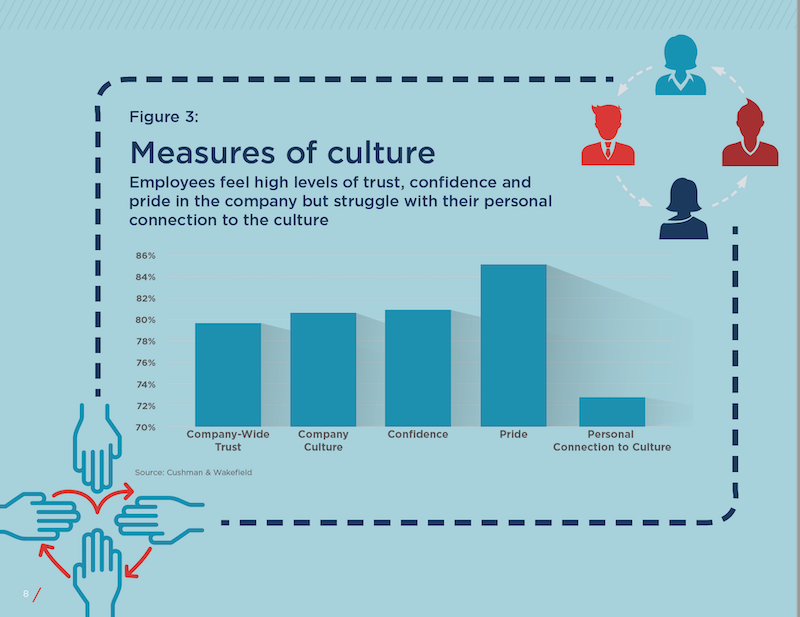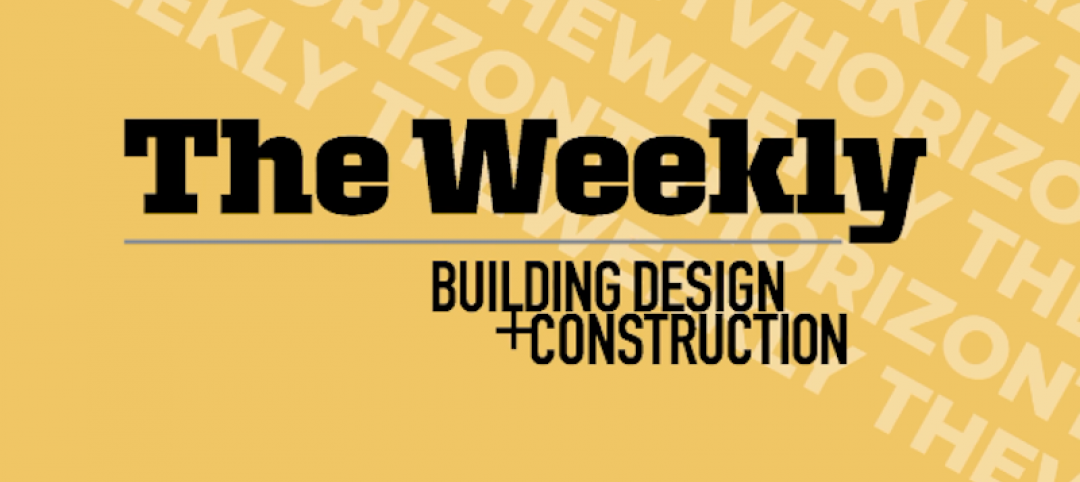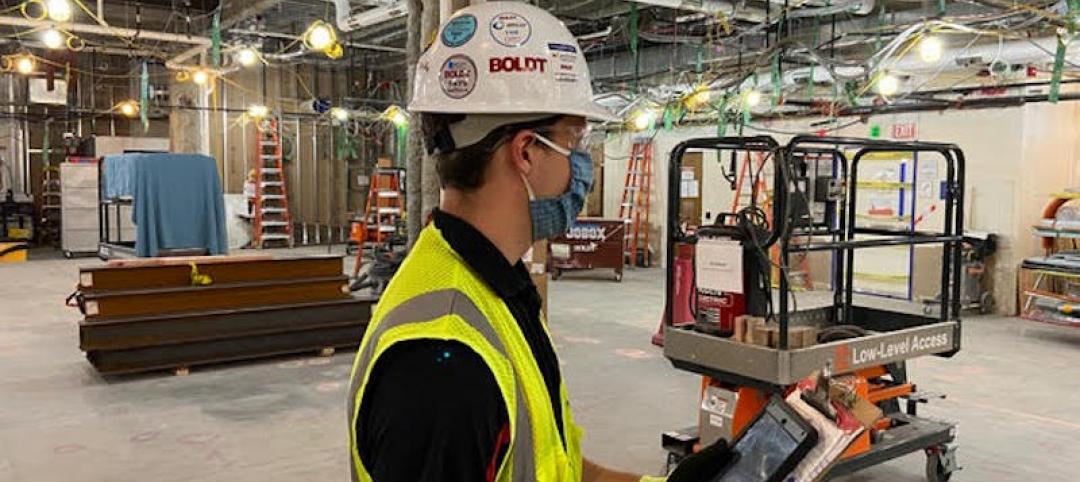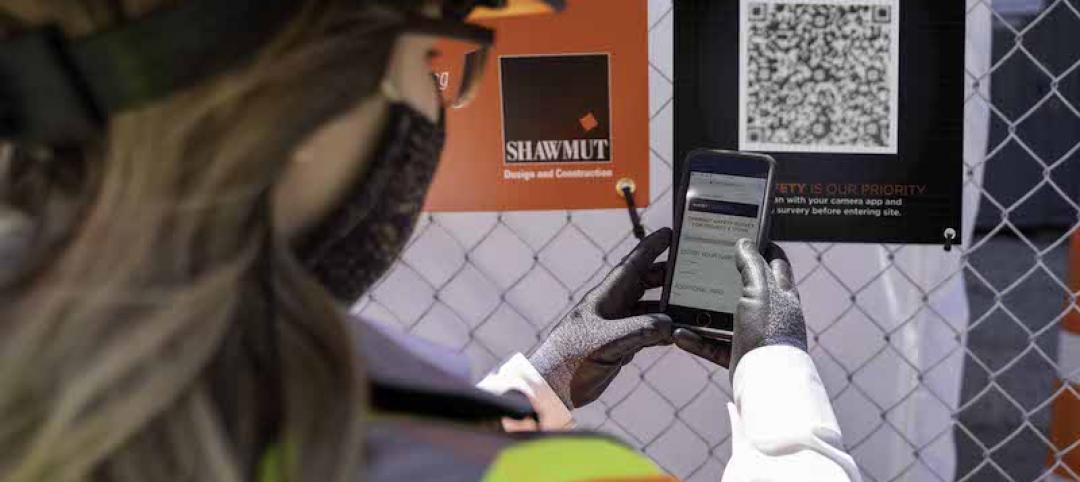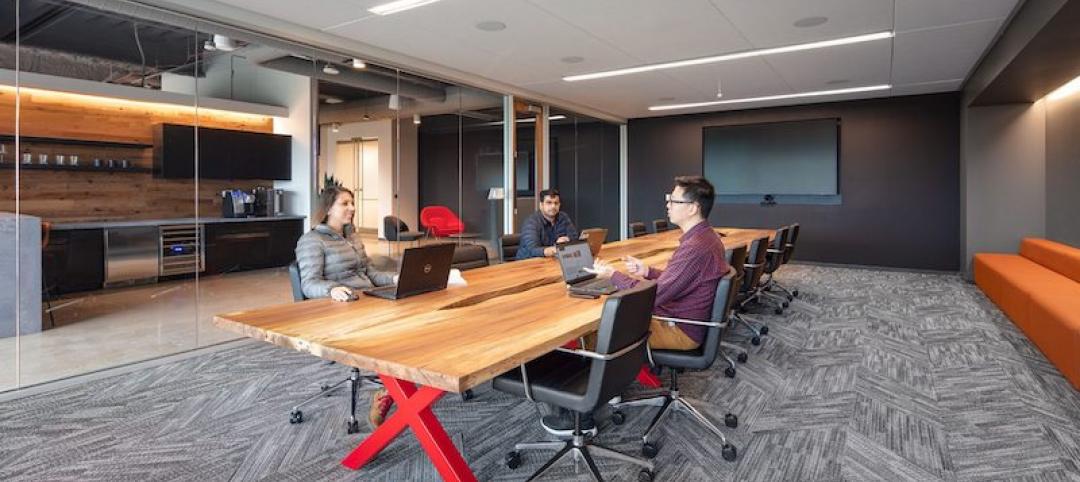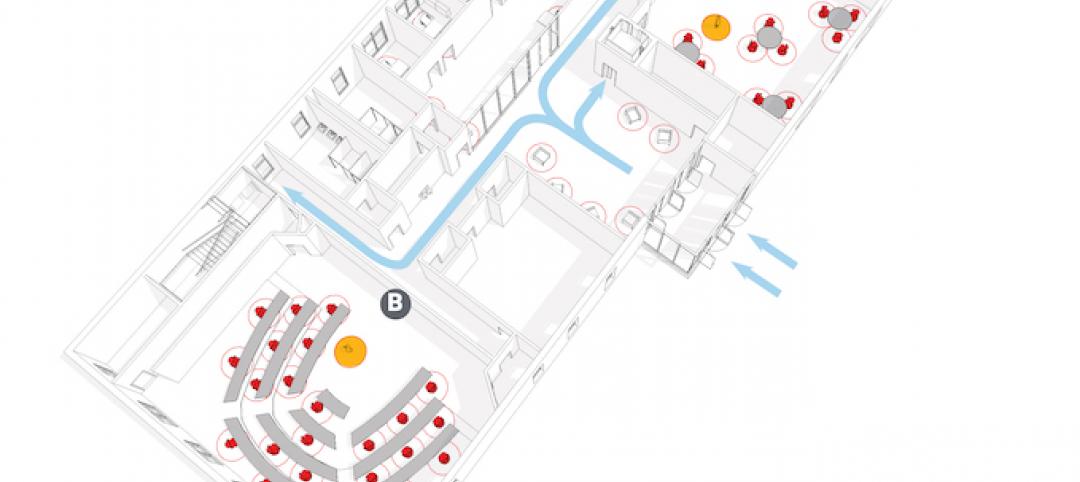During the coronavirus pandemic, millions of employees, both in the U.S. and worldwide, found themselves working from home in compliance with shelter-at-home mandates by governments. A new survey of more than 40,000 employees found that workers can be productive and collaborative anywhere, and actually prefer flexibility about where they are allowed to work from day to day. However, what’s eroded in the process is the cultural bond that connects employees to their companies, colleagues, and customers.
Consequently, the workplace has become an ecosystem that is a network of virtual and physical spaces. And the new purpose of the office is to provide inspiring destinations that strengthen the cultural connections, learning, and bonding with customers and colleagues.
“The office is where I feel part of the company,” Brett White, executive chairman and CEO of Cushman & Wakefield, said during an interview yesterday with CNBC’s Squawk on the Street program. Cushman & Wakefield is the author of this “Future of the Workplace” report, for which it analyzed more than 2.5 million data points driving workplace experiences for workers across the planet in the pre-COVID-19 era, and another 1.7 million data points from the survey’s respondents in the current work-from-home environment.
Also See: Using lighting IoT to inform a safer office reentry strategy
The report found a lot of enthusiasm for at-home work. Among the employees surveyed, 73% believes their companies should embrace some level of working from home, and 90% of employees feel they can be trusted to work remotely. Three quarters of those polled agree or strongly agree that they have been collaborating effectively with colleagues in the current environment, a 10-point increase from the pre-COVID-19 period.
 During the pandemic, employees assert they can be productive and collaborative working from home.
During the pandemic, employees assert they can be productive and collaborative working from home.
Those findings led Cushman & Wakefield to infer that “the enforced work from home means that using collaborative technology tools is no longer optional but an imperative, and employees are using them to their fullest.” Employees also believe that, despite the distractions attendant to working from home (including kids, pets, home schooling while schools are shut), they can be productive when called upon to focus.
Also see: Infection control in office buildings: Preparing for re-occupancy amid the coronavirus
But this survey also found that working from home isn’t always ideal. For one thing, not every house is set up adequately to replicate an office. And working from home seems to be tougher for younger employees: 70% of Gen Z and 69% of Millennials report challenges in remote working, compared to 55% of Baby Boomers.
The report suggests that people still struggle with remaining disciplined and energized during the day when they’re at home working. This continued to be the weakest experience outcome among respondents.
Overall wellbeing is also jeopardized when people work from home, not because they struggle to maintain a work/life balance but rather because they have less time away from work.
As employees return to offices, Cushman & Wakefield is cautioning companies to take time to understand people’s challenges and consider how they can support them. For example, salespeople have had the hardest time adjusting to at-home work requirements, as have R&D teams. Conversely, operations and support functions seem to have little downside from the at-home work experience.
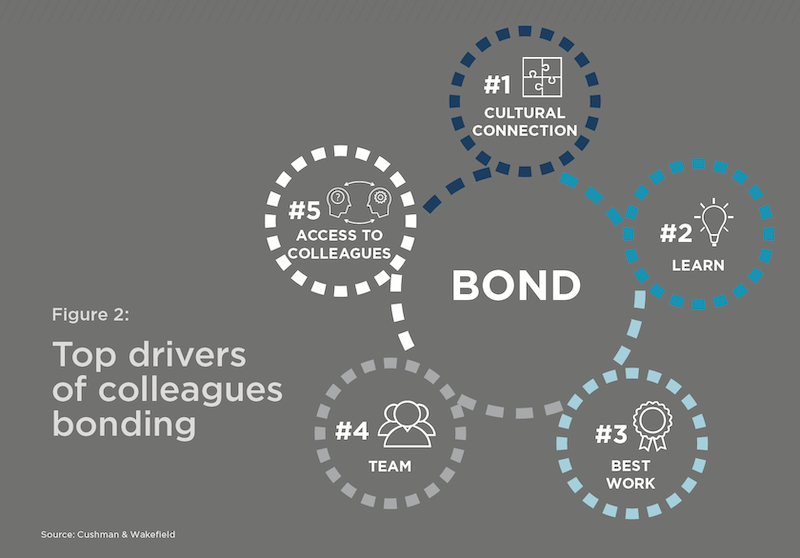 Among the factors that drive worker bonds, cultural connection still ranked tops. The Cushman & Wakefield report states that the cultural bond is harder to maintain when workers aren't in offices.
Among the factors that drive worker bonds, cultural connection still ranked tops. The Cushman & Wakefield report states that the cultural bond is harder to maintain when workers aren't in offices.
Also see: Office market could be COVID-19 casualty
Cushman & Wakefield also notes that flexible working practices can help companies enact social-distancing measures and new types of collaborative environments without needing to add more square footage. “If 50% of respondents who indicated they would increase their flexible working followed through on this, there would be no net change in footprint,” the report states.
Cushman & Wakefield expects organizations to embrace more remote working. “In doing so, we can reimagine the way we work and leverage location, time and technology to drive improved people, place and business performance.”
However, White told CNBC that, to maintain their “cultural adhesion,” companies would also limit the number of employees who to work from home permanently. He expects that number to be less than 10%, and possibly as low as 5-6%.
Related Stories
Coronavirus | Jun 26, 2020
Infection control in buildings in the age of the coronavirus
Controlling future infection spreads could become job one for most buildings and spaces.
Coronavirus | Jun 26, 2020
ICYMI The Weekly show: The hotel sector's 'competition for cleanliness' and workplace design amid COVID-19
This week on The Weekly (June 25 episode), BD+C editors spoke with leaders from Skidmore, Owings & Merrill, Henderson Engineers, and Shawmut Design & Construction on three timely topics.
Coronavirus | Jun 23, 2020
A look back at design standard shifts: ADA vs. COVID-19
The short story is official design guidelines are slow to be developed and made into law.
Coronavirus | Jun 23, 2020
WATG designs solution for isolating without sacrificing social connectivity
The design was inspired by oriel bay windows.
Coronavirus | Jun 22, 2020
Boldt creates an innovation task force to speed up safe opening of jobsites, 14 offices
Boldt creates an innovation task force to speed up safe opening of jobsites, 14 offices
Coronavirus | Jun 19, 2020
Experts address COVID-19's impact on nursing homes and schools on The Weekly
The June 18 episode of BD+C's "The Weekly" is available for viewing on demand.
Coronavirus | Jun 18, 2020
Brown University tops off first housing building in three decades
The facility, scheduled for completion next April, will combine a residence hall with student health services.
Coronavirus | Jun 17, 2020
HOK and Germfree partner to design mobile COVID-19 testing lab
Access to quick, reliable, and repeated testing has been one of the greatest challenges for businesses, institutions and individuals during the COVID-19 crisis.
Coronavirus | Jun 17, 2020
Guiding changes in the workplace: Past, present, and future
Since the COVID-19 pandemic, many companies are managing sudden change as they assess the impact on workplace design and how people use spaces.
Coronavirus | Jun 14, 2020
A new report on how campus buildings can reopen safely
Leo A Daly white paper suggests dividing students into smaller “cohorts,” and assigning bathroom spaces.


